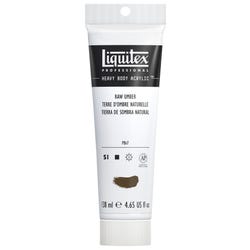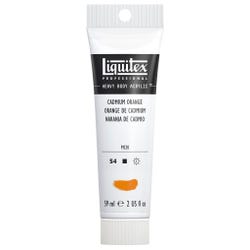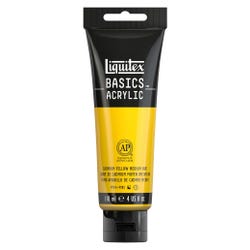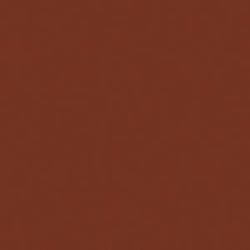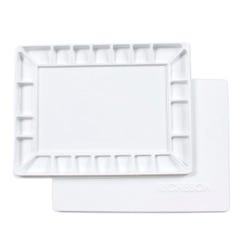Acrylics Landscape

Description
Through this lesson students will discover the benefits of using GOLDEN OPEN Acrylics because of their high quality and slow drying time. The use of GOLDEN mediums will show students how they can build depth and transparency in their own work. Landscapes will be the vehicle for this lesson.
Objectives
- Students will learn the benefits and characteristics of GOLDEN OPEN Acrylics.
- Students will explore the use of glazing and veiling techniques to produce transparency and depth.
- Students will interactively apply an art movement to the process of painting a landscape on canvas.
Supplies Needed
Liquitex Acrylics:
Burnt Sienna, 2 oz.
Cadmium Orange, 2 oz.
Cadmium Red Medium, 2 oz.
Cadmium Yellow Medium, 2 oz.
Phthalo Green (B.S.) , 2 oz.
Quinacridone Magenta, 2 oz.
Raw Umber, 2 oz.
Ultramarine Blue, 5 oz.
Fredrix® Gallerywrap Canvas, 18" x 24"
Watercolor Palette with Cover, 16" x 12 1/4" x 7/8"
Royal® Painting Knives, Set of 5
Black Silver by Dynasty® Brushes:
Flat, Size 12
Flat, Size 8
Stroke, 1"
Round, Size 6
Round, Size 4
Other Materials:
Plastic bags to create texture
Standards
CONTENT Standard #1:
Understanding and applying media, techniques and processes.
CONTENT Standard #4:
Understanding the visual arts in relation to history and cultures.
CONTENT Standard #5:
Reflecting upon and assessing the characteristics and merits of their work and work of others.
Instructions
1
Inform the students that they will be using GOLDEN OPEN Acrylics. As the name OPEN implies, this paint gives the artist an extended time to paint. Students will be able to experiment with various painting techniques such as glazing, blending, softening, veiling, shading and fine detail. The use of a covered palette will allow the paint to stay wet, without forming a skin. Layers of paint should be no thicker than a dime for optimal drying time. Demonstrate various painting techniques for the students with the paint on canvas. Demonstrate how the use of gels and mediums can create transparencies and veiling in the painting to achieve depth.
2
Have the students research landscapes though Art History which have both depth and translucency, such as the works of Turner, Thomas Cole, Corot, Church, and Claude Lorraine. Their works illustrate both great composition and ethereal mood through color and technique.
3
Tell students that their work can be realistic, abstract or impressionistic. Remind them that a good landscape is divided into sections of three, both horizontally and vertically. The landscape design should lead the viewer's eye through the composition by the use of color, design and properties of perspective. There should be one focal point where the eye lands.
4
Instruct the students on the advantages of doing an underpainting to give their work lots of depth and translucency. Start the underpainting with a strong color such as Cadmium Red mixed with the GOLDEN Matte Medium. This is an excellent ground. Use a crumpled plastic bag to texture the underpainting.
5
Next, with a dry brush, scumbled technique add a coat of Ultramarine Blue mixed with the Matte Medium over the first coat of Cadmium Red. Texture it again with a plastic bag to give it dimension and allow the Cadmium coat to show through.
6
Allow the paint to dry a bit before blocking in lights and darks. Use large blocks of color to lay down the composition of the painting.
7
Mixing Soft Gel with the paint will create glazes, which give a high level of transparency in an even layer of paint. Ten percent paint to gel will yield a very nice transparent color.
8
As areas of color and shape start to form, they can be worked over easily because the paint is slow drying. Slowly build in forms and detail.
9
Display and discuss work so that students can assess their own work and the work of others. NOTES & HINTS
- The use of mediums and gels with the OPEN Acrylics causes a faster drying time than the use of the paint alone. Letting the paint sit out a bit before painting will cause it to become a bit thicker, changing the tack of the paint.
- A dry brush technique will reveal some of the underpainting, thus giving the work more interest and depth.
- Remember if you add white to anything, it will become opaque.




